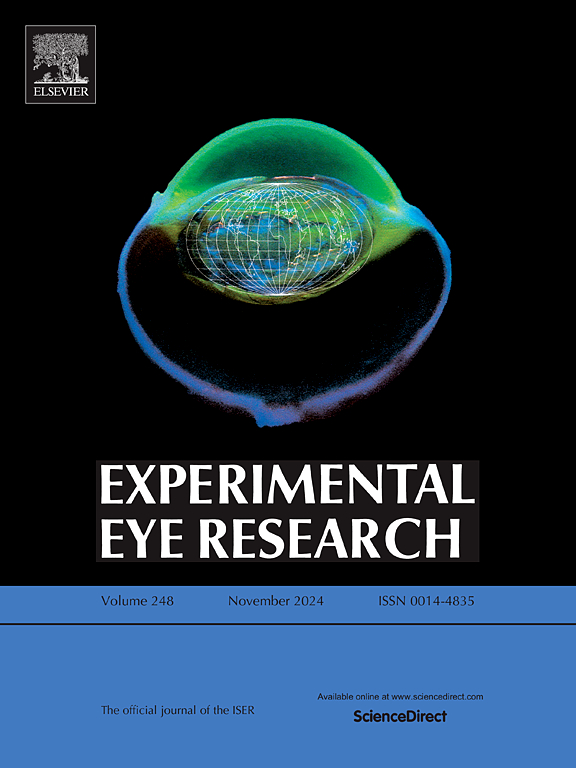Sex-dependent variations of retinal function and architecture in a neurofibromatosis type I mouse model with normal vision
IF 3
2区 医学
Q1 OPHTHALMOLOGY
引用次数: 0
Abstract
We aimed to characterize the structure and function of the early visual system of the neurofibromatosis type 1 (NF1) mouse model, a syndromic model of autism spectrum disorders (ASD).
We used Nf1+/− mice and WT littermates and performed retinal structural analysis by optical coherence tomography (OCT), and functional assessment by electrophysiological recordings. We then performed behavioral visual tests using optomotor response (OMR) and sensitivity to visual stimulus familiarity.
From the structural analysis, we found increased thickness for ganglion cell layer-inner plexiform layer (GCL-IPL) and outer nuclear layer (ONL) in male Nf1+/− mice compared with WT littermates. Regarding retinal electrophysiology, female Nf1+/− mice exhibited increased amplitudes for the second oscillatory potential (OP2) compared with WT littermates. Nevertheless, both Nf1+/− and WT mice presented normal visual acuity as measured by OMR and were able to exhibit regular visual stimulus familiarity responses.
While structural sex-dependent changes are in line with previous results for brain anatomic measures, the subtle sex-dependent changes in oscillatory activity may relate to GABAergic neurotransmission changes found in NF1. Overall, these structural and functional changes do not seem to translate into visual behavioral alterations.
求助全文
约1分钟内获得全文
求助全文
来源期刊

Experimental eye research
医学-眼科学
CiteScore
6.80
自引率
5.90%
发文量
323
审稿时长
66 days
期刊介绍:
The primary goal of Experimental Eye Research is to publish original research papers on all aspects of experimental biology of the eye and ocular tissues that seek to define the mechanisms of normal function and/or disease. Studies of ocular tissues that encompass the disciplines of cell biology, developmental biology, genetics, molecular biology, physiology, biochemistry, biophysics, immunology or microbiology are most welcomed. Manuscripts that are purely clinical or in a surgical area of ophthalmology are not appropriate for submission to Experimental Eye Research and if received will be returned without review.
 求助内容:
求助内容: 应助结果提醒方式:
应助结果提醒方式:


